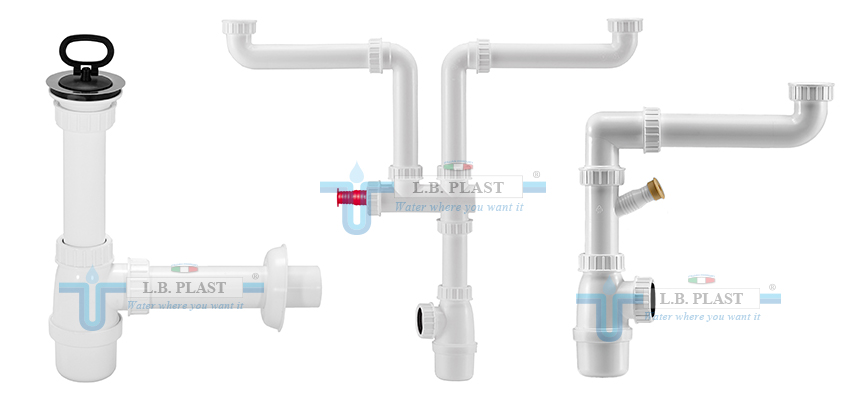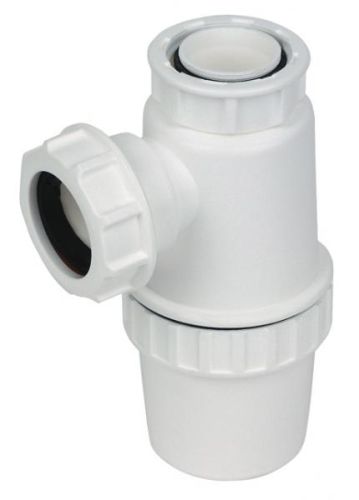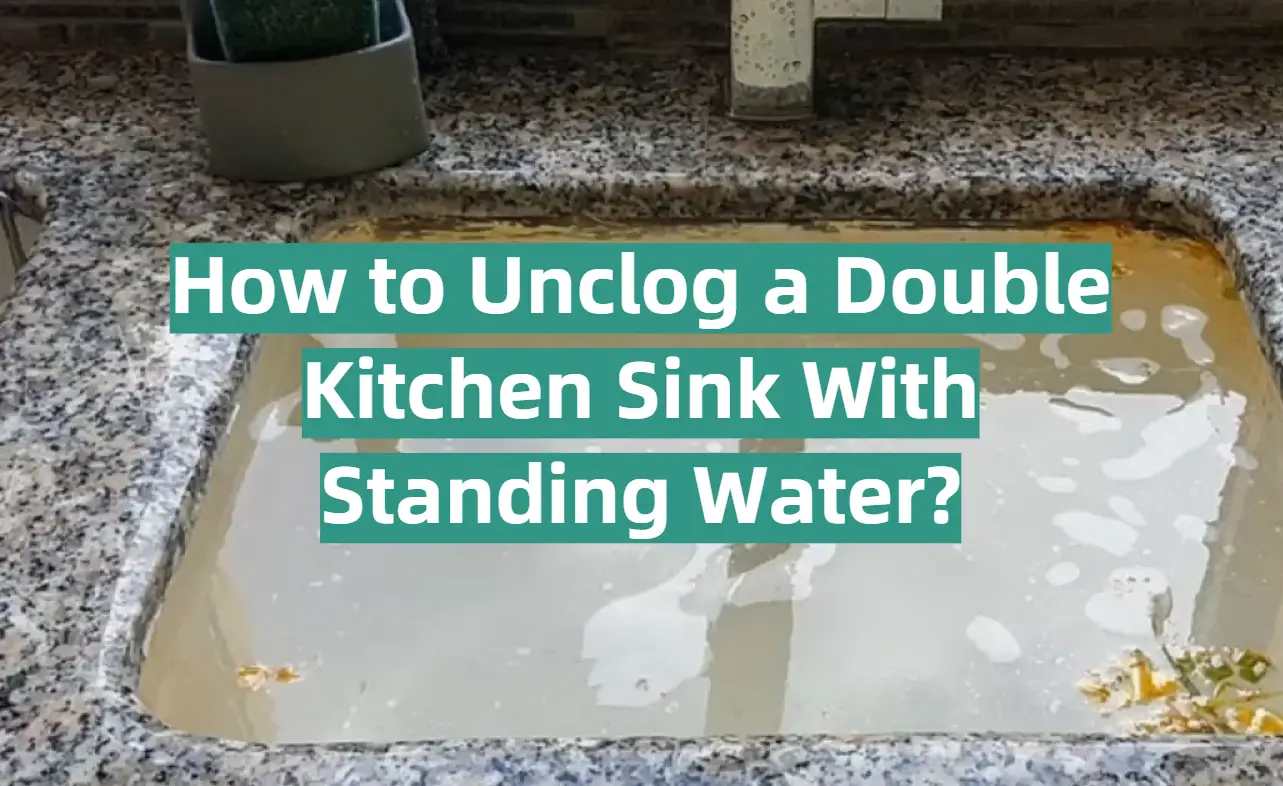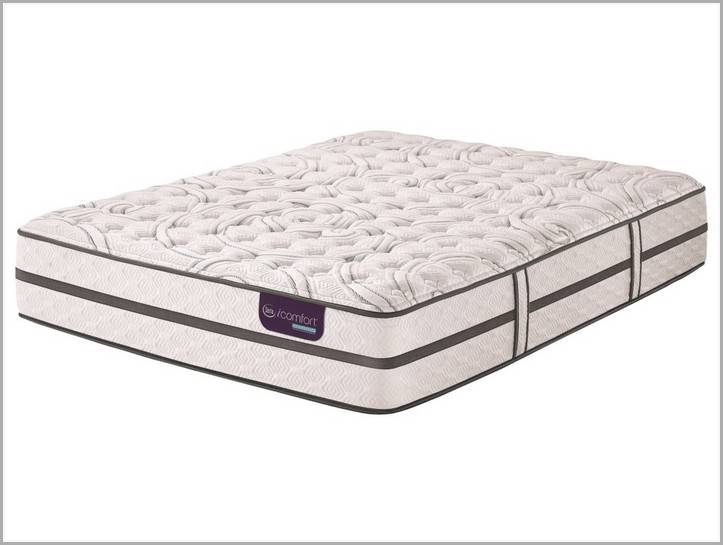If you're looking to upgrade your kitchen sink plumbing, a bottle trap may be a great addition. Not only does it add a sleek and modern touch to your sink, but it also has practical benefits. Installing a bottle trap is a relatively simple process that you can do yourself with the right tools and materials. First, you'll need to gather your supplies. This includes a bottle trap, a wrench, plumber's tape, and a bucket to catch any water that may spill out during the installation process. Then, follow these steps: Step 1: Turn off the water supply to your kitchen sink and remove the existing plumbing, including the old trap. Step 2: Wrap plumber's tape around the threaded ends of the new bottle trap to create a tight seal. Step 3: Place the bottle trap under the sink and attach it to the drain pipe using the wrench. Make sure it's securely tightened. Step 4: Connect the other end of the bottle trap to the sink's waste pipe and tighten it using the wrench. Step 5: Turn on the water supply and check for any leaks. If there are any, tighten the connections until they are sealed. Tip: Make sure to read the manufacturer's instructions for your specific bottle trap as installation steps may vary.1. How to Install a Bottle Trap on a Kitchen Sink
Bottle traps have become increasingly popular in modern kitchen sink designs. But what exactly are the benefits of using one? Here are a few reasons why you should consider installing a bottle trap on your kitchen sink: Prevents odors: The unique design of a bottle trap traps water in its curved section, creating a seal and preventing unpleasant odors from coming up through the drain. This is especially helpful if you have a garbage disposal in your sink that can sometimes produce unpleasant smells. Easier to clean: Traditional P-traps can often get clogged with debris and become difficult to clean. Bottle traps, on the other hand, are easier to access and clean out when needed. Space-saving: Traditional P-traps can take up a lot of space under your sink, making it difficult to store cleaning supplies or other items. Bottle traps are more compact and can free up valuable space under your sink. Modern design: As mentioned earlier, bottle traps add a sleek and modern touch to your kitchen sink. They come in a variety of finishes and styles, allowing you to choose one that complements your kitchen's aesthetic.2. Benefits of Using a Bottle Trap on a Kitchen Sink
While bottle traps have their benefits, there are also some common problems that may arise when using them on a kitchen sink. Here are a few to be aware of: Leaks: If the connections between the bottle trap and drain pipes are not tightened properly, you may experience leaks. Be sure to double-check all connections after installation and tighten them if needed. Clogging: While bottle traps are easier to clean than traditional P-traps, they can still get clogged with debris. Regularly cleaning out your bottle trap can help avoid this issue. Compatibility: Some bottle traps may not be compatible with certain sink designs, so it's important to check before purchasing. If you have a double kitchen sink, you may need a bottle trap specifically designed for that setup.3. Common Problems with Using a Bottle Trap on a Kitchen Sink
Proper maintenance and cleaning of your bottle trap can help prevent any potential problems. Here's how to keep your bottle trap in good condition: Step 1: Regularly check for any debris or buildup in the curved section of the bottle trap. Use a bottle brush or pipe cleaner to remove any obstructions. Step 2: Once a month, pour a mixture of hot water and vinegar down the drain to help break down any buildup or grime. Step 3: If you notice any foul odors coming from your sink, try pouring a mixture of baking soda and lemon juice down the drain and letting it sit for a few minutes before rinsing with hot water. Step 4: If the bottle trap is clogged and regular cleaning methods are not effective, you may need to remove the trap and clean it out manually.4. How to Clean and Maintain a Bottle Trap on a Kitchen Sink
When shopping for a bottle trap for your kitchen sink, you'll find that there are different types to choose from. The most common types include: Standard bottle traps: These are the most basic type of bottle trap and are typically used for single kitchen sinks. Adjustable bottle traps: These bottle traps have a flexible neck that can be adjusted to fit different sink and drain pipe configurations. Double bowl bottle traps: As the name suggests, these bottle traps are designed for double kitchen sinks and have two outlets instead of one. Decorative bottle traps: If you want to add a touch of style to your kitchen sink, decorative bottle traps are available in various designs and finishes to match your decor.5. Different Types of Bottle Traps for Kitchen Sinks
Yes, you can use a bottle trap on a double kitchen sink. As mentioned earlier, there are bottle traps specifically designed for double sinks that have two outlets instead of one. This allows for proper drainage from both sinks without the risk of clogging or overflowing. Tip: Make sure to measure the distance between the two drains on your double sink before purchasing a bottle trap to ensure a proper fit.6. Can You Use a Bottle Trap on a Double Kitchen Sink?
If you need to replace your existing bottle trap, here's a quick guide on how to do so: Step 1: Turn off the water supply and remove the old bottle trap using a wrench. Step 2: Clean the area around the drain pipe and sink waste pipe. Step 3: Apply plumber's tape to the threaded ends of the new bottle trap. Step 4: Install the new bottle trap, making sure the connections are tight and secure. Step 5: Turn on the water supply and check for any leaks. Step 6: If there are no leaks, you're all set. If there are leaks, tighten the connections until they are sealed.7. Step-by-Step Guide for Replacing a Bottle Trap on a Kitchen Sink
If you notice a leak coming from your bottle trap, here are a few steps you can take to fix it: Step 1: Tighten the connections between the bottle trap and drain pipes using a wrench. Step 2: If the connections are already tight, try replacing the rubber washers in the connections. These can sometimes become worn out and cause leaks. Step 3: If the leak persists, you may need to replace the bottle trap altogether.8. How to Fix a Leaking Bottle Trap on a Kitchen Sink
As with any plumbing fixture, there are pros and cons to using a bottle trap on your kitchen sink. Here's a quick rundown of both: Pros: - Prevents odors from coming up through the drain - Easier to clean and maintain - Space-saving design - Modern and stylish appearance Cons: - May experience leaks if connections are not tightened properly - Can still get clogged with debris - Compatibility with certain sink designs may be an issue9. Pros and Cons of Using a Bottle Trap on a Kitchen Sink
When shopping for a bottle trap for your kitchen sink, keep these tips in mind: Consider the size: Measure the distance between your drain pipe and sink waste pipe to ensure a proper fit. Think about compatibility: If you have a double kitchen sink, make sure to choose a bottle trap specifically designed for that setup. Check the material: Bottle traps come in various materials, such as plastic and metal. Choose one that is durable and long-lasting. Consider the style: Bottle traps come in a variety of finishes and designs, so choose one that complements your kitchen's aesthetic. Read reviews: Before making a purchase, read reviews from other customers to see if they have had any issues with the specific bottle trap you are considering. In conclusion, a bottle trap can be a great addition to your kitchen sink plumbing. With its practical benefits and modern design, it's worth considering when upgrading your sink. Follow these tips and guidelines for a successful installation and maintenance of your bottle trap. 10. Tips for Choosing the Right Bottle Trap for Your Kitchen Sink
Why Bottle Traps are a Great Option for Kitchen Sinks

The Benefits of Using a Bottle Trap
 If you are considering a bottle trap for your kitchen sink, you may be wondering what the benefits are. Firstly, bottle traps are a great option for those looking for a more modern and sleek design for their kitchen. Unlike traditional P-traps, bottle traps are compact and can easily fit under your sink without taking up too much space. This makes them a great choice for smaller kitchens or those with limited cabinet space.
Another benefit of using a bottle trap for your kitchen sink is their ease of installation. Unlike other types of traps, bottle traps do not require any complicated plumbing work. They can easily be installed by the homeowner themselves, saving you time and money. Additionally, bottle traps are known for their durability and longevity. Made from high-quality materials, they are less likely to corrode or leak, ensuring your sink stays in top condition for years to come.
If you are considering a bottle trap for your kitchen sink, you may be wondering what the benefits are. Firstly, bottle traps are a great option for those looking for a more modern and sleek design for their kitchen. Unlike traditional P-traps, bottle traps are compact and can easily fit under your sink without taking up too much space. This makes them a great choice for smaller kitchens or those with limited cabinet space.
Another benefit of using a bottle trap for your kitchen sink is their ease of installation. Unlike other types of traps, bottle traps do not require any complicated plumbing work. They can easily be installed by the homeowner themselves, saving you time and money. Additionally, bottle traps are known for their durability and longevity. Made from high-quality materials, they are less likely to corrode or leak, ensuring your sink stays in top condition for years to come.
Why Bottle Traps are a Suitable Option for Kitchen Sinks
 Bottle traps are not only aesthetically pleasing and easy to install, but they are also suitable for use in kitchen sinks. This is because they are designed to handle larger amounts of water and debris that often come with washing dishes and preparing food. Traditional P-traps, on the other hand, can easily become clogged with food particles and cause unpleasant odors. Bottle traps have a larger diameter, allowing for better flow and preventing clogs.
Moreover, bottle traps are also a hygienic option for kitchen sinks. Unlike traditional P-traps, they do not hold standing water which can become a breeding ground for bacteria and mold. This makes them a great choice for those concerned about the cleanliness and sanitation of their kitchen.
In conclusion, bottle traps are a great option for kitchen sinks. They offer a modern and sleek design, easy installation, durability, and suitability for use in the kitchen. So if you are considering a bottle trap for your kitchen sink, rest assured that it is a practical and wise choice. Upgrade your kitchen with a bottle trap and enjoy its many benefits.
Bottle traps are not only aesthetically pleasing and easy to install, but they are also suitable for use in kitchen sinks. This is because they are designed to handle larger amounts of water and debris that often come with washing dishes and preparing food. Traditional P-traps, on the other hand, can easily become clogged with food particles and cause unpleasant odors. Bottle traps have a larger diameter, allowing for better flow and preventing clogs.
Moreover, bottle traps are also a hygienic option for kitchen sinks. Unlike traditional P-traps, they do not hold standing water which can become a breeding ground for bacteria and mold. This makes them a great choice for those concerned about the cleanliness and sanitation of their kitchen.
In conclusion, bottle traps are a great option for kitchen sinks. They offer a modern and sleek design, easy installation, durability, and suitability for use in the kitchen. So if you are considering a bottle trap for your kitchen sink, rest assured that it is a practical and wise choice. Upgrade your kitchen with a bottle trap and enjoy its many benefits.





















/sink-drain-trap-185105402-5797c5f13df78ceb869154b5.jpg)


/sink-drain-trap-185105402-5797c5f13df78ceb869154b5.jpg)



:max_bytes(150000):strip_icc()/Basic-kitchen-sink-types-1821207_color_rev-0b539306b9ef4236a136624ad2a89a4c.jpg)















:max_bytes(150000):strip_icc()/replacing-a-sink-p-trap-2718773-hero-f3f65fbc400e41438c4d8280de025fc6.jpg)






























